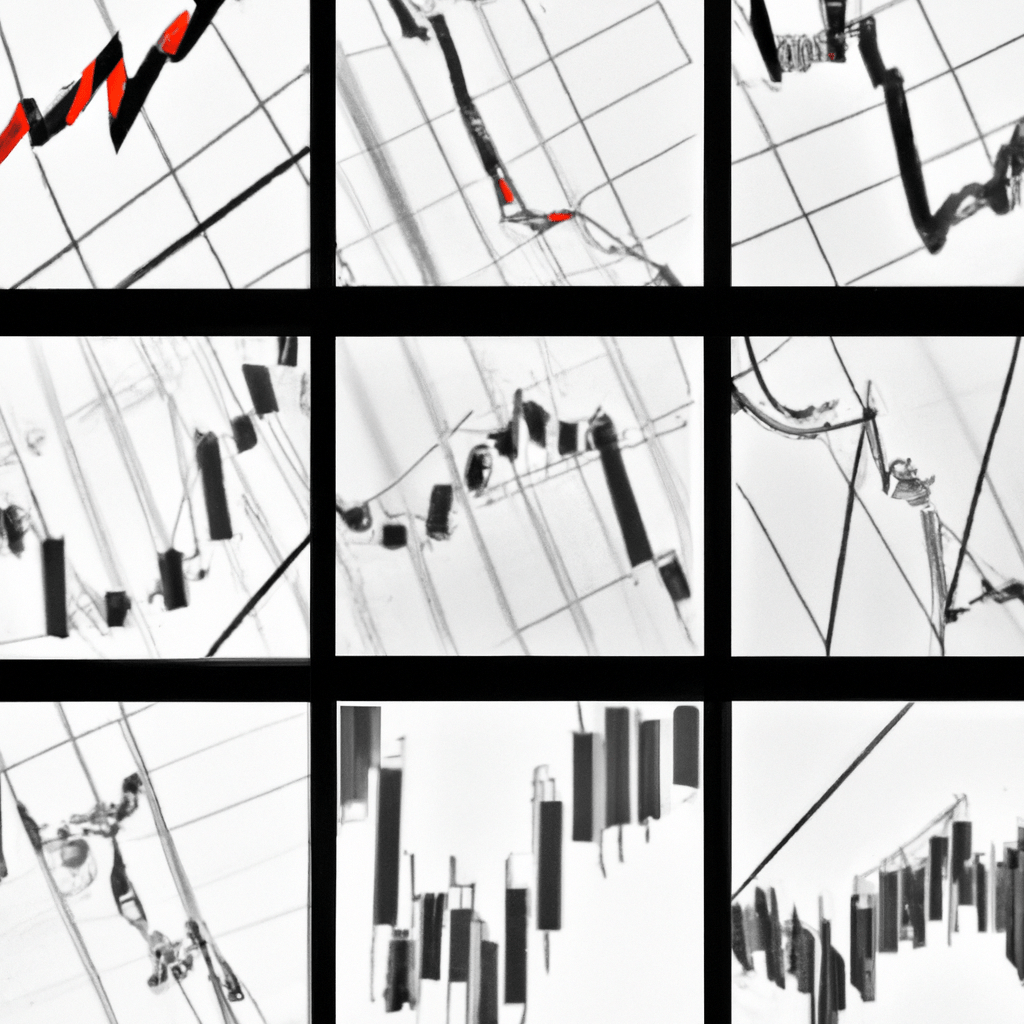This article provides a guide to different types of forex signals including manual, automated, and copy trading signals. It explains the pros and cons of each type and emphasizes the importance of choosing the right signal strategy for individual trading goals and preferences. It also covers different signal strategies such as technical analysis, fundamental analysis, and sentiment analysis.
Forex trading has become increasingly popular in recent years, with individuals from all walks of life eager to try their hand at profiting from the global currency market. However, navigating this complex and volatile market can be a daunting task, even for experienced traders. That's where forex signals come in. In this comprehensive guide, we will delve into the world of forex signals, exploring the different types available, the various categories they fall into, and the common strategies and signals used by traders. Whether you're a beginner looking to understand the basics or an experienced trader seeking new insights, this article will provide you with the knowledge you need to make informed decisions in the forex market.
1. Understanding Different Types of Forex Signals: A Comprehensive Guide

Forex signals are essentially recommendations or suggestions provided by experienced traders or automated systems to help traders make informed decisions in the foreign exchange market. These signals can be highly beneficial for both beginner and seasoned traders who want to maximize their chances of success.
Understanding the different types of forex signals is crucial for traders as it allows them to select the most suitable signals based on their trading goals, risk tolerance, and trading style. Here, we will provide a comprehensive guide to the various types of forex signals commonly used in the market.
1. Manual Forex Signals:
Manual forex signals are generated by professional traders who analyze the market manually and provide trading recommendations based on their analysis. These signals are usually sent through various communication channels such as email, SMS, or instant messaging platforms. Manual signals are preferred by traders who value the human element in trading, as they rely on the expertise and experience of the signal provider.
2. Automated Forex Signals:
Automated forex signals are generated by advanced computer algorithms and trading systems. These signals are based on predefined rules and technical indicators, which are programmed into the software. The algorithms continuously analyze market data and generate signals when specific trading conditions are met. Automated signals offer the advantage of speed and efficiency, as they can monitor multiple currency pairs simultaneously and execute trades automatically.
3. Free Forex Signals:
Free forex signals are widely available online and are often provided by independent traders or signal providers as a marketing strategy to attract clients. While these signals can be beneficial for traders on a tight budget, it is important to exercise caution and thoroughly evaluate the reliability and accuracy of the free signal provider. It is recommended to verify their track record and reputation before relying solely on their signals for trading decisions.
4. Paid Forex Signals:
Paid forex signals are subscription-based services provided by professional traders or signal providers for a fee. These signals are often considered more reliable and accurate, as the signal provider has a vested interest in delivering profitable trades to their subscribers. Paid signals may offer additional features such as detailed analysis, risk management strategies, and personalized support. However, it is essential to conduct thorough research and choose a reputable paid signal provider to ensure the quality of the signals.
5. Short-term vs. Long-term Signals:
Forex signals can also be categorized based on their time horizon. Short-term signals are designed for traders who prefer quick trades and aim for smaller profits within a short period. These signals typically focus on intraday or swing trading strategies. On the other hand, long-term signals are suitable for traders with a more patient approach, as they aim to capture larger market movements over a longer duration. These signals often follow trend-based strategies and can hold positions for several days, weeks, or even months.
In conclusion, understanding the different types of forex signals is crucial for traders to make informed decisions in the foreign exchange market. Whether it is manual or automated signals, free or paid, short-term or long-term, traders should carefully evaluate their options and choose the signals that align with their trading objectives and preferences. Additionally, it is essential to continuously assess the performance and reliability of the chosen signal provider to ensure consistent profitability in forex trading.
2. Exploring the Various Categories of Forex Signals: Which One Works Best for You?

When it comes to forex trading, many traders rely on forex signals to inform their trading decisions. Forex signals are essentially trading recommendations or alerts that are generated by professional traders or automated systems. These signals indicate the best time to enter or exit a trade, based on various market indicators and analysis.
However, it is important to note that not all forex signals are created equal. There are different categories of forex signals, each with its own advantages and disadvantages. Exploring these various categories can help you determine which type of forex signal works best for you and your trading style.
1. Manual Forex Signals:
Manual forex signals are generated by professional traders who closely analyze the market and identify potential trading opportunities. These traders have years of experience and use their expertise to manually generate trading signals. Manual signals are often based on technical analysis, fundamental analysis, or a combination of both.
One of the advantages of manual forex signals is that they are generated by human traders who can take into account various market factors and use their intuition. They can adapt to changing market conditions and potentially identify trading opportunities that automated systems may miss. However, manual signals require constant monitoring and may be subject to human error or bias.
2. Automated Forex Signals:
Automated forex signals, on the other hand, are generated by computer algorithms or trading robots. These algorithms are designed to analyze market data, identify patterns, and generate trading signals automatically. Automated signals can be based on a variety of technical indicators and predefined trading rules.
One of the main advantages of automated forex signals is their ability to process large amounts of data quickly and efficiently. They can analyze multiple currency pairs simultaneously and generate signals 24/7, even when the trader is not actively monitoring the market. However, automated signals may lack the human intuition and adaptability that manual signals offer. They can also be affected by glitches or technical issues.
3. Copy Trading Signals:
Copy trading signals are a popular category among beginner traders or those who prefer a more hands-off approach to trading. With copy trading, you can automatically replicate the trades of successful traders in real-time. These traders, also known as signal providers, allow others to copy their trades for a fee or a share of the profits.
One of the advantages of copy trading signals is that they allow inexperienced traders to benefit from the expertise of more experienced traders. It eliminates the need for extensive market analysis and decision-making. However, it is important to choose reliable and verified signal providers and carefully monitor their performance to ensure consistent profitability.
In conclusion, the different categories of forex signals offer unique advantages and disadvantages. Manual signals provide the expertise and adaptability of human traders, while automated signals offer efficiency and speed. Copy trading signals provide an opportunity to benefit from the success of others. Ultimately, the best type of forex signal for you will depend on your trading goals, risk tolerance, and personal preferences.
3. Diving into the World of Forex Signals: Common Strategies and Signals Explained

Diving into the World of Forex Signals: Common Strategies and Signals Explained
Forex signals play a crucial role in the dynamic world of foreign exchange trading. They provide traders with valuable insights and recommendations, helping them make informed decisions and maximize their profits. However, understanding the different types of forex signals and the strategies behind them is essential for any trader looking to venture into this exciting and potentially lucrative market.
1. Technical Analysis Signals:
Technical analysis is a widely used approach in forex trading, and it forms the basis for many forex signal strategies. These signals are generated by analyzing historical price data, charts, and various technical indicators. Traders employing technical analysis signals aim to identify trends, support and resistance levels, and potential entry and exit points for trades.
One popular technical indicator used in forex signal strategies is moving averages. Moving averages help smooth out price fluctuations and highlight the overall trend direction. When the price crosses above or below a moving average, it may signify a potential buy or sell signal, respectively.
Other technical analysis tools used in forex signals include oscillators like the Relative Strength Index (RSI) and the Moving Average Convergence Divergence (MACD). These indicators help identify overbought or oversold conditions in the market, providing signals for potential reversals or trend continuations.
2. Fundamental Analysis Signals:
Fundamental analysis focuses on evaluating economic, political, and social factors that can impact currency values. Fundamental forex signals are generated based on news releases, economic indicators, and geopolitical events. Traders using fundamental analysis signals aim to capitalize on potential market movements resulting from these events.
For example, if a country's central bank announces an interest rate hike, it may attract foreign investors seeking higher returns. This can lead to an increase in demand for the country's currency, providing a potential buy signal. On the other hand, negative economic data or political instability can trigger selling pressure, leading to a potential sell signal.
Fundamental analysis signals require staying updated on economic news, central bank decisions, and geopolitical developments. Traders need to carefully analyze the potential impact of these factors on currency pairs before making trading decisions.
3. Sentiment Analysis Signals:
Sentiment analysis signals focus on gauging market sentiment and investor psychology. This approach believes that emotions drive market movements, and by understanding and analyzing these sentiments, traders can identify potential trading opportunities.
Sentiment analysis signals are often generated using indicators like the Commitment of Traders (COT) report, which provides insights into the positions of large traders in the market. If the report shows a significant increase in long positions in a particular currency pair, it may indicate a bullish sentiment and a potential buy signal.
Social media sentiment analysis is another emerging method that uses artificial intelligence and natural language processing techniques to analyze public sentiment towards specific currencies. By monitoring social media platforms and news articles, sentiment analysis tools can provide traders with real-time sentiment indicators.
In conclusion, forex signals come in various forms, each with its own set of strategies and indicators. Technical analysis, fundamental analysis, and sentiment analysis are among the common approaches used to generate these signals. Traders should carefully consider their trading style, risk tolerance, and market conditions to choose the most suitable forex signal strategy for their trading endeavors.
In conclusion, understanding the different types of forex signals is crucial for any trader looking to navigate the vast world of foreign exchange. This comprehensive guide has explored the various categories of forex signals and has provided insights into which ones may work best for individual traders. By diving into the world of forex signals and exploring common strategies and signals, traders can make informed decisions and potentially enhance their trading success. Whether it is technical analysis, fundamental analysis, or a combination of both, finding the right forex signal strategy is key. With continuous learning and an understanding of market trends, traders can harness the power of forex signals to their advantage and potentially achieve their financial goals.





